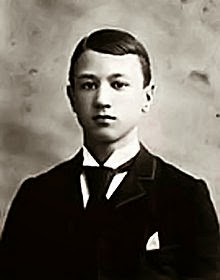 Felix Mendelssohn and his older sister Fanny were both musically gifted. Fanny was a musical child prodigy like her brother and a composer in her own right. She wrote over 400 works but the prevailing attitude of the time towards women precluded any thought of publishing her works. When Fanny died of complications from a stroke in May of 1847, Felix was distraught. He not only lost a sibling that he was very close to, but a trusted critic and colleague. He composed a string quartet in her memory and titled it Requiem For Fanny.
Felix Mendelssohn and his older sister Fanny were both musically gifted. Fanny was a musical child prodigy like her brother and a composer in her own right. She wrote over 400 works but the prevailing attitude of the time towards women precluded any thought of publishing her works. When Fanny died of complications from a stroke in May of 1847, Felix was distraught. He not only lost a sibling that he was very close to, but a trusted critic and colleague. He composed a string quartet in her memory and titled it Requiem For Fanny.A long time friend of Mendelssohn said of the quartet:
It would be difficult to cite any piece of music which so completely impresses the listener with a sensation of gloomy foreboding, of anguish of mind, and of the most poetic melancholy, as does this masterly and eloquent composition.
 |
| Fanny Mendelssohn-Hensel |
The impassioned character of the whole seems to me to be in keeping with his present frame of mind, shaken as he is to the heart's core by the loss of his sister.The composition of this string quartet was a portent of Felix's own fate. It was the last major work he was to write, as six months after his sister's death Felix died of a stroke. The String Quartet No. 6 In F Minor Opus 80 is in 4 movements:
I. Allegro vivace assai - The quartet begins with nervous energy and feeling of foreboding in the first theme. The second theme doesn't lessen the anxiety as much as it puts it slightly in the background. The development section expands the themes and fleshes them out with occasional counterpoint, but the drive of the movement doesn't slacken. The recapitulation of the slightly altered themes bring a sense of even more instability. A coda increases the tempo and passion and the movement ends in the minor mode.
II. Allegro assai - A scherzo that is far removed from the quicksilver ones Mendelssohn was known for. This one continues the agitation of the first movement as well as the key of F minor. The trio begins with the cello and viola with an eerie figure low in each instrument's register. The violins enter to this accompaniment and the music conjurs up visions of a spectre. The scherzo is repeated, the trio makes another abbreviated appearance and the movement ends.
III. Adagio - The only movement out of the 4 that is in a major key, this is a song without words, a love song for his departed sister. There is a short section where passion rises slightly, but the music returns back to the love song that makes its way to a peaceful ending.
IV. Finale: Allegro molto - The turmoil of the first two movements returns in the finale. There are brief respites with short lyrical sections, but the movement is mostly in a panic throughout. Sharp accents and dissonance pepper the movement, along with disquieting sections of reduced dynamics that do nothing to quell the tension. A violin takes off in passioned flight near the end of the movement which leads to a quickening of the pace and the bitter end of the quartet.























